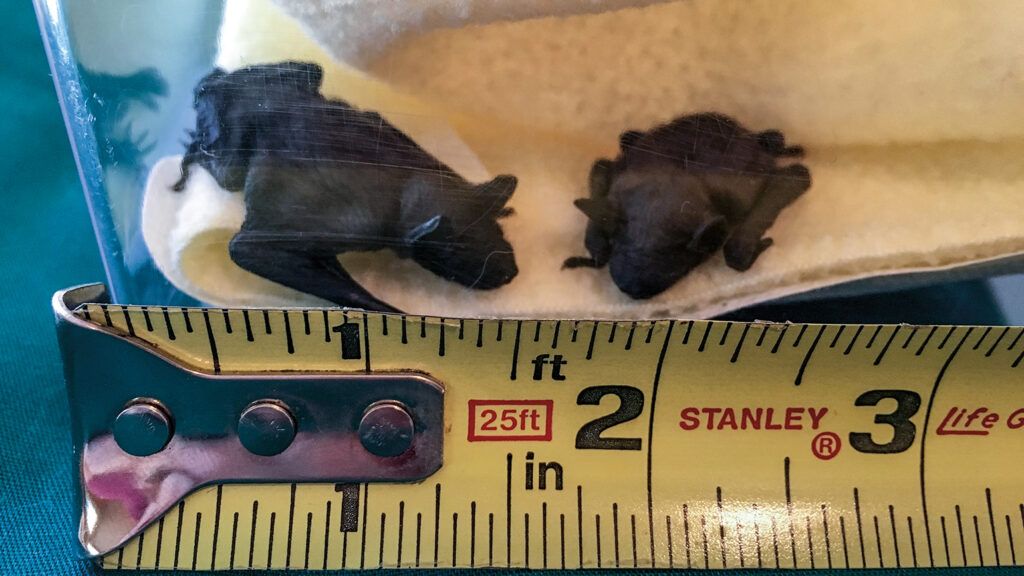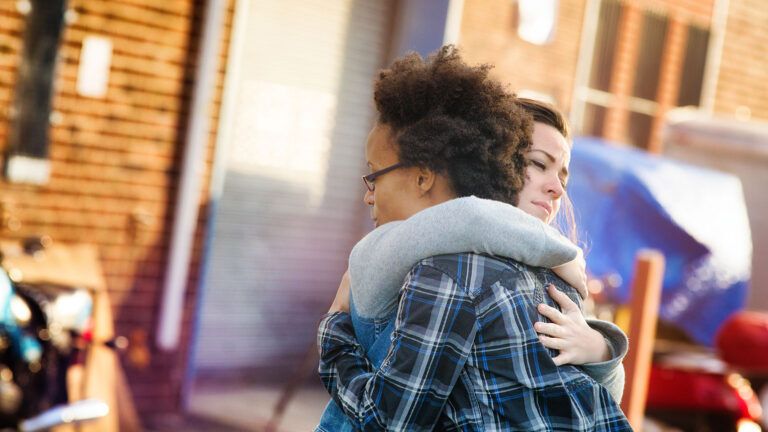The tiny black creatures could not be more than a few days old. Just over an inch long, they resembled the itty-bitty frogs that climbed the patio doors of our Savannah, Georgia, home at night, chasing the insects drawn by the indoor lights. But these weren’t amphibians. They were baby big brown bats. The woman who called the Savannah Wildlife Rescue Center, where I volunteered, had found them on the sidewalk of her apartment complex. Mother bats fly with their infants clinging to them. Their mother might have been attacked and dropped them.
Jeanne, our director, contacted me immediately. I’d been working almost exclusively with bats since I’d moved to Savannah a year earlier, but mostly adults or juveniles. I was stunned when I weighed the twin babies. One male, one female, they tipped the scale at only three grams each—about the same as a penny. All I could think was, Will they make it?
I wondered the same about myself, in a different sense. I had been struggling to feel at home in Savannah. My husband and I had moved here from Pennsylvania to be closer to our daughters and granddaughters. It was wonderful being part of my grandkids’ daily lives, but I still wasn’t settled. I often asked God, Is this really where I should be?
Volunteering was something familiar. I had worked in animal rescue for many years and in wildlife rehabilitation and veterinary emergency care for the past decade. I was trained to work with rabies-vector species. I also had a great deal of experience caring for neonatal mammals. I had tube-fed infant opossums and bunnies, and syringe—and bottle—fed baby raccoons, squirrels, chipmunks, groundhogs, skunks and more than 400 kittens.
I knew that these little ones needed to be well hydrated, so I used an insulin syringe to give them the tiniest amount of subcutaneous fluids in the loose skin behind their shoulder blades. Then I contacted people who had the knowledge I needed. Pennsylvania Bat Rescue was doing an amazing job raising orphaned baby bats. The director, Steph, was kind enough to mentor me long-distance for the next few weeks.
A plastic critter carrier turned upside down with damp paper towels beneath it on a heating pad became a makeshift incubator, simulating the humid conditions inside a bat colony. Q-tips stimulated the babies to urinate and defecate. Jeanne got me goat and coyote formula, avian vitamins, probiotics and special neonatal milk replacer to create a formula that would meet their nutritional needs. They fed from the soaked tip of a makeup applicator. It was critical to check the “milk line” visible on their tiny bellies so that I could see when they’d had enough.
I found myself talking about the twin bats to my granddaughters, to anyone who would listen. I was completely invested in their healing. I began to notice the nooks and crannies of the old buildings in downtown Savannah, imagining my tiny patients roosting there one day.
Sadly, the little male, possibly injured when he fell, passed away. But day after day, the female grew bigger and stronger. She graduated from formula to mealworm guts and then to headless mealworms, at first fed one at a time with tweezers. It was thrilling when she began doing wing flaps. We started taking her out at dusk for flight training inside a large enclosed picnic tent. Our little big brown girl was quickly growing into a precocious juvenile. She would launch herself off a wall of the flight cage and flutter wildly about until she found purchase again on another surface.
It takes only a few weeks before young bats can begin to catch insects on their own. Unlike some mammals that have to be retaught wild behaviors, bats instinctively know what to do the moment they are released. All too soon, that moment arrived. I didn’t want to say goodbye. Not just because I cared about this small creature, but also because her need for my care helped me feel as if I was exactly where I should be.
One muggy August evening, I took the bat back to the place she’d been found. Live oaks dripping with long strands of Spanish moss loomed over a nearby parking lot, and a pretty water feature in the center of the landscaping would provide a place to drink, lots of bugs to snatch up and a directional marker to help her orient herself. I stood atop my van with the bat held high in my gloved hand. She hesitated for a moment, then suddenly launched herself into the air, swooping down, up and off toward a live oak.
I strained to see her, hoping for one more look. She’d disappeared into the night. But she was where she was supposed to be. And so was I.
Did you enjoy this story? Subscribe to All Creatures magazine.





